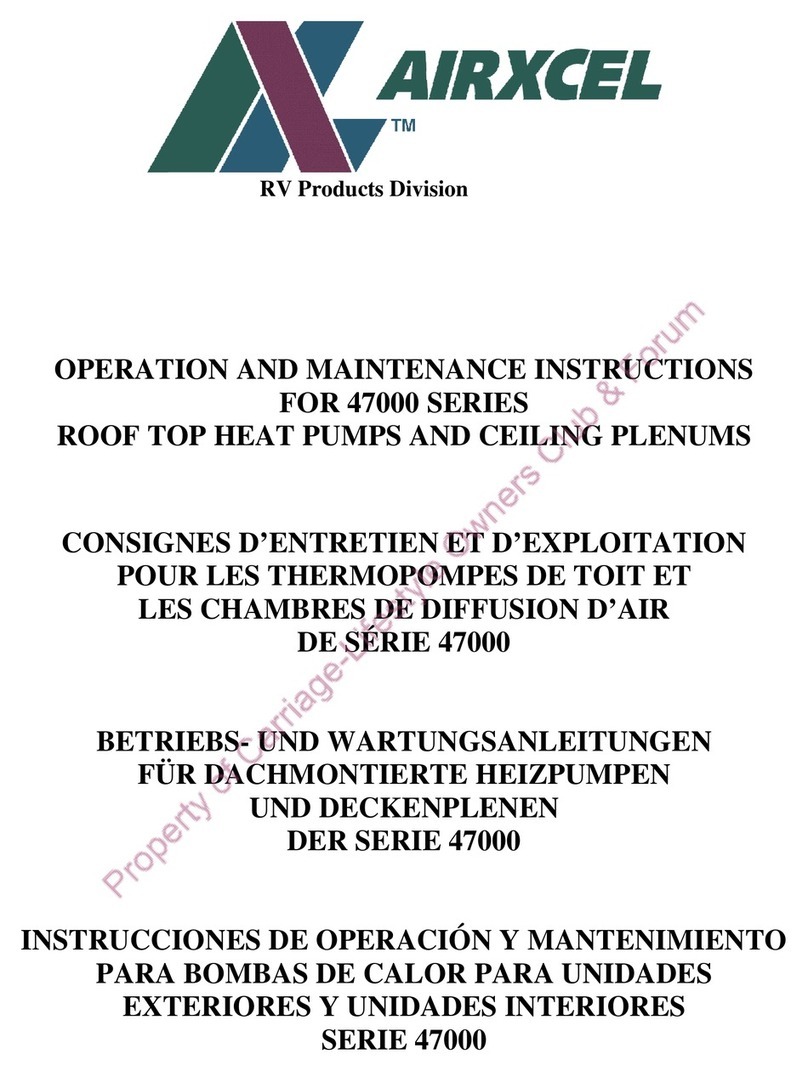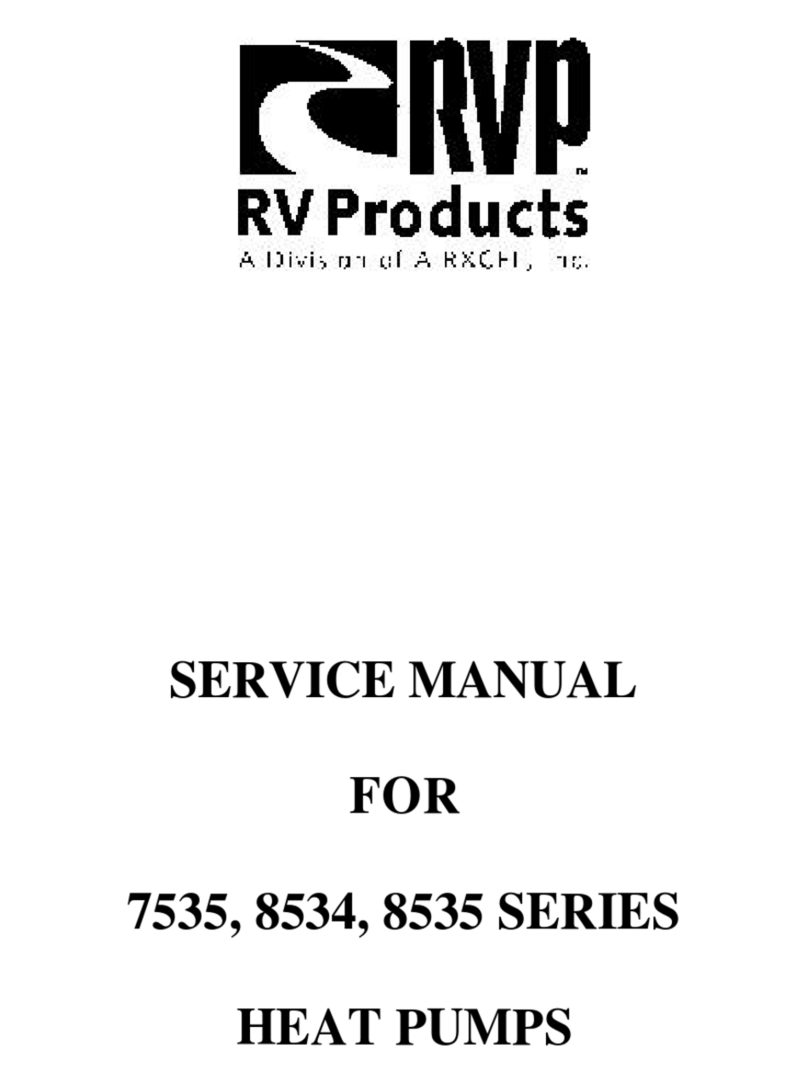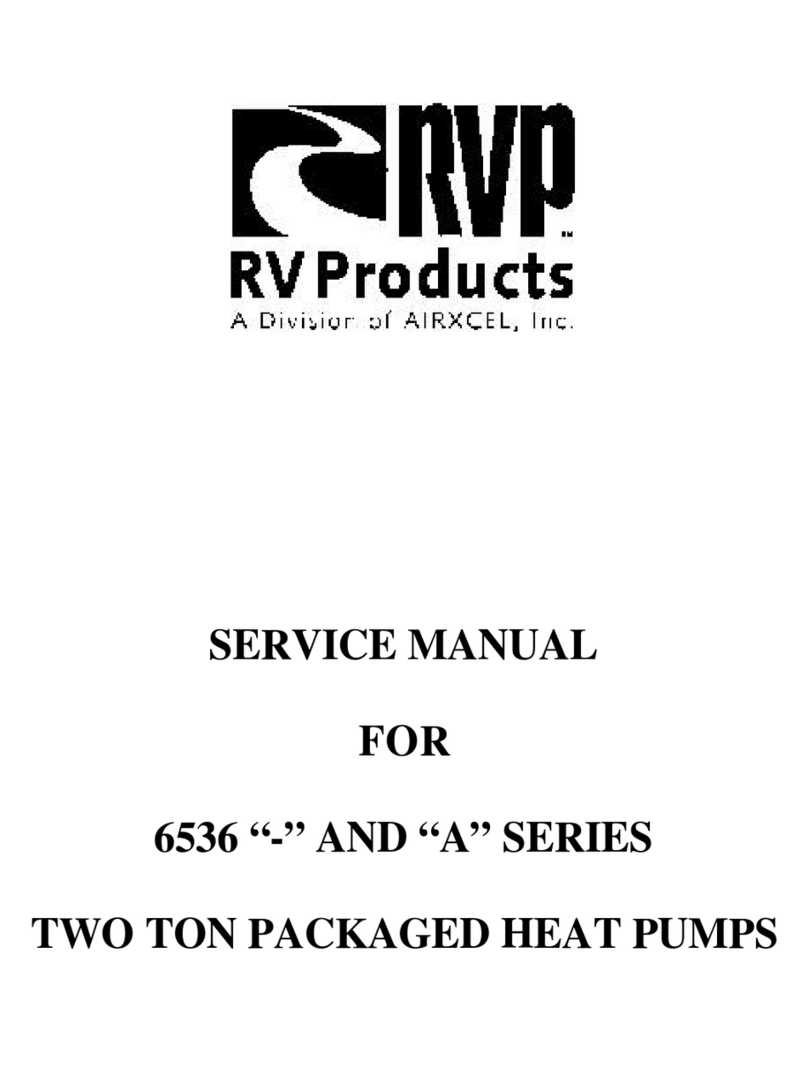
6
DEFAULT MODE: WHEN THE THERMOSTAT IS SWITCHED TO HEAT AND ELECTRIC HEAT IS
SELECTED ON THE SUB-BASE, AND THE OUTDOOR TEMPERATURE FALLS
TO A POINT AT WHICH THE HEAT PUMP SHUTS DOWN (USUALLY BETWEEN
25 - 40 DEGREES), THE SUB-BASE WILL AUTOMATICALLY ALSO CALL FOR GAS
FURNACE OPERATION IF THE INDOOR TEMPERATURE DROPS TO 45 DEGREES.
GAS FURNACE OPERATION WILL SHUT OFF AT 60 DEGREES. THE USER SHOULD SWITCH
THE SUB-BASE TO GAS HEAT IF THIS OCCURS.
6535-3451 Thermostat Operation
The heat pump is operated from the wall mounted thermostat.
This thermostat will also operate the 12VDC furnace
connected to this thermostat.
Identification and operational descriptions for all thermostat
switches and display are listed below:
1. Liquid Crystal Display - The display will be visible
any time the system is in operation. The display will
remain visible while the thermostat is on and
powered.
2. System Switch - The system switch has four
positions to control the operation of the heating and
air conditioning systems. They are as follows:
COOL - When in the cool position, 1st and 2nd stage
cooling will cycle from the cooling system setpoint.
Blower operation will be controlled by the position
of the Cooling Fan Switch.
HEAT - When in the heat position, the heating
system will cycle from the heating system setpoint.
Heat will be by electricity (heat pump) or gas as
selected on sub-base. The gas heating blower will
operate per the heating system manufacturer
specifications.
OFF - When in the off position, no thermostat or
system operation will occur.
FAN - When in the fan position, the cooling blower
will operate continuously at high speed.
3. Cooling Fan Switch - The fan switch has four
positions from which to control the operation of the
cooling blower. The fan switch controls operation of
the cooling blower only after the system switch is
placed into the COOL position. With the system
switch in any other position, the fan switch will have
no effect on the operation of the cooling blower. Fan
switch positions and their resulting function are
listed below:
HIGH AUTO - When in the high automatic position,
the cooling blower operates at high speed and cycles
off and on with the 1st stage compressor. 2nd stage
cooling will cycle on and off as needed having no
effect on cooling blower operation.
LOW AUTO - When in the low automatic position,
the cooling blower operates at low speed and cycles
off and on with the 1st stage compressor. 2nd stage
cooling will cycle on and off as needed having no
effect on cooling blower operation.
LOW ON - When in the low on position, the cooling
blower operates continuously at low speed. Stage 1
and Stage 2 compressors cycle on and off as needed.
HIGH ON - When in the high on position, the
cooling blower operates continuously at high speed.
Stage 1 and Stage 2 compressors cycle on and off as
needed.
During heat pump operation, the blower operates at
high speed with heat demand.
4. Heat Source Switch - The heat source switch has two
positions to control the operation of the heating
systems. They are as follows:
ELECTRIC - When in the electric heat position, the
heat pump will cycle from the heating system
setpoint. Gas heat default is as described above in
the thermostat specifications
GAS - When in the gas heat position, the furnace will
cycle from the heating system setpoint.






























